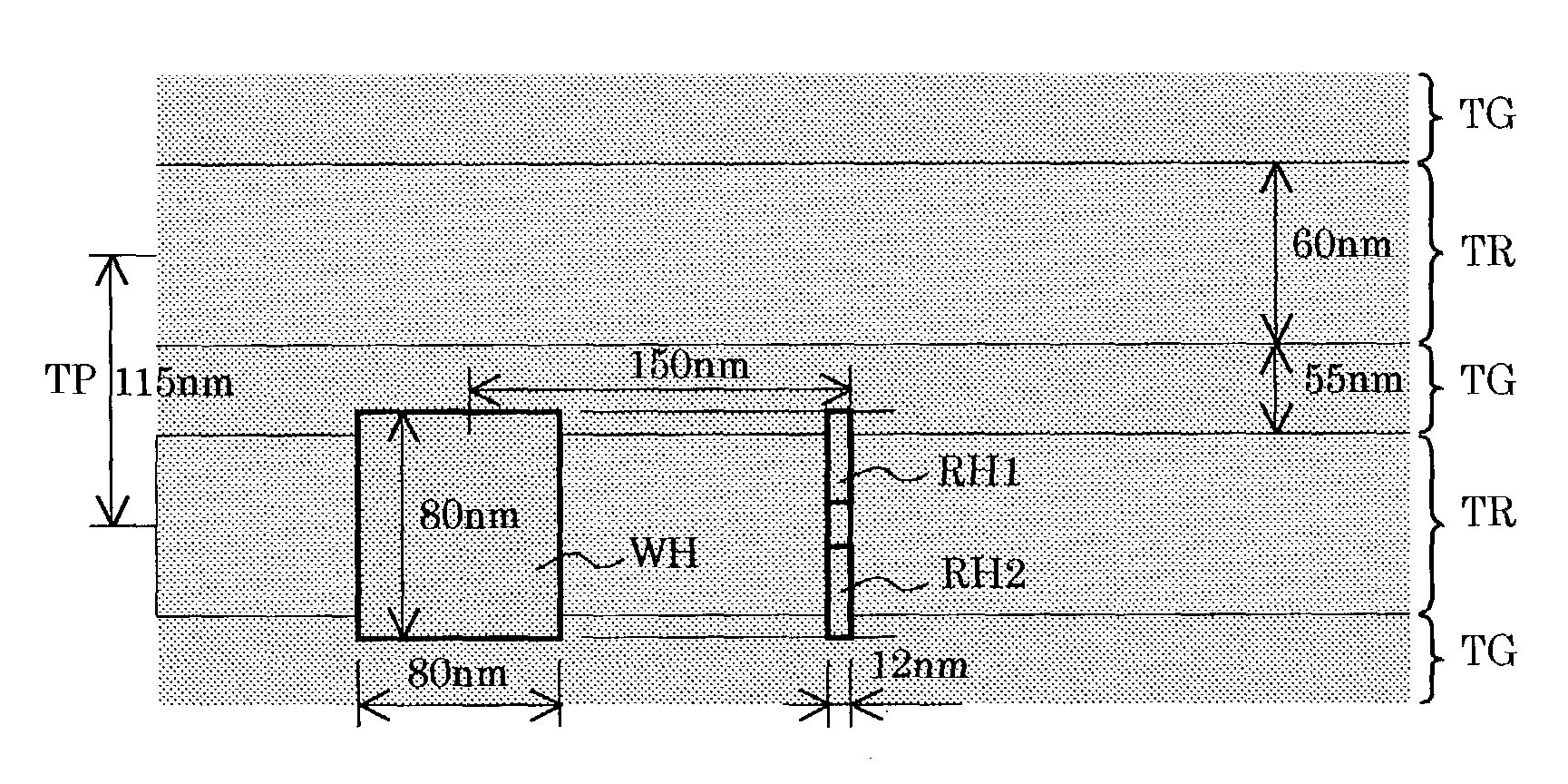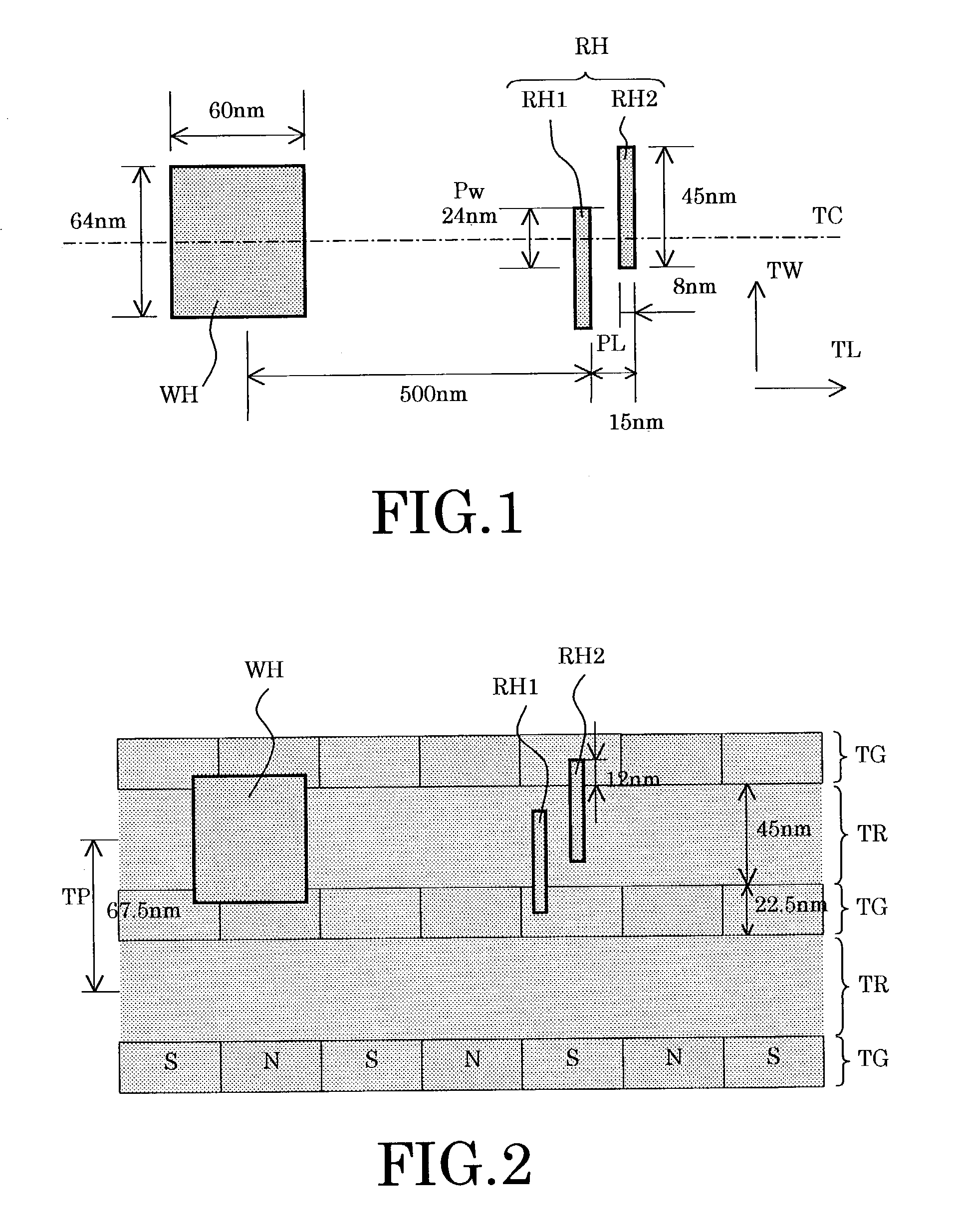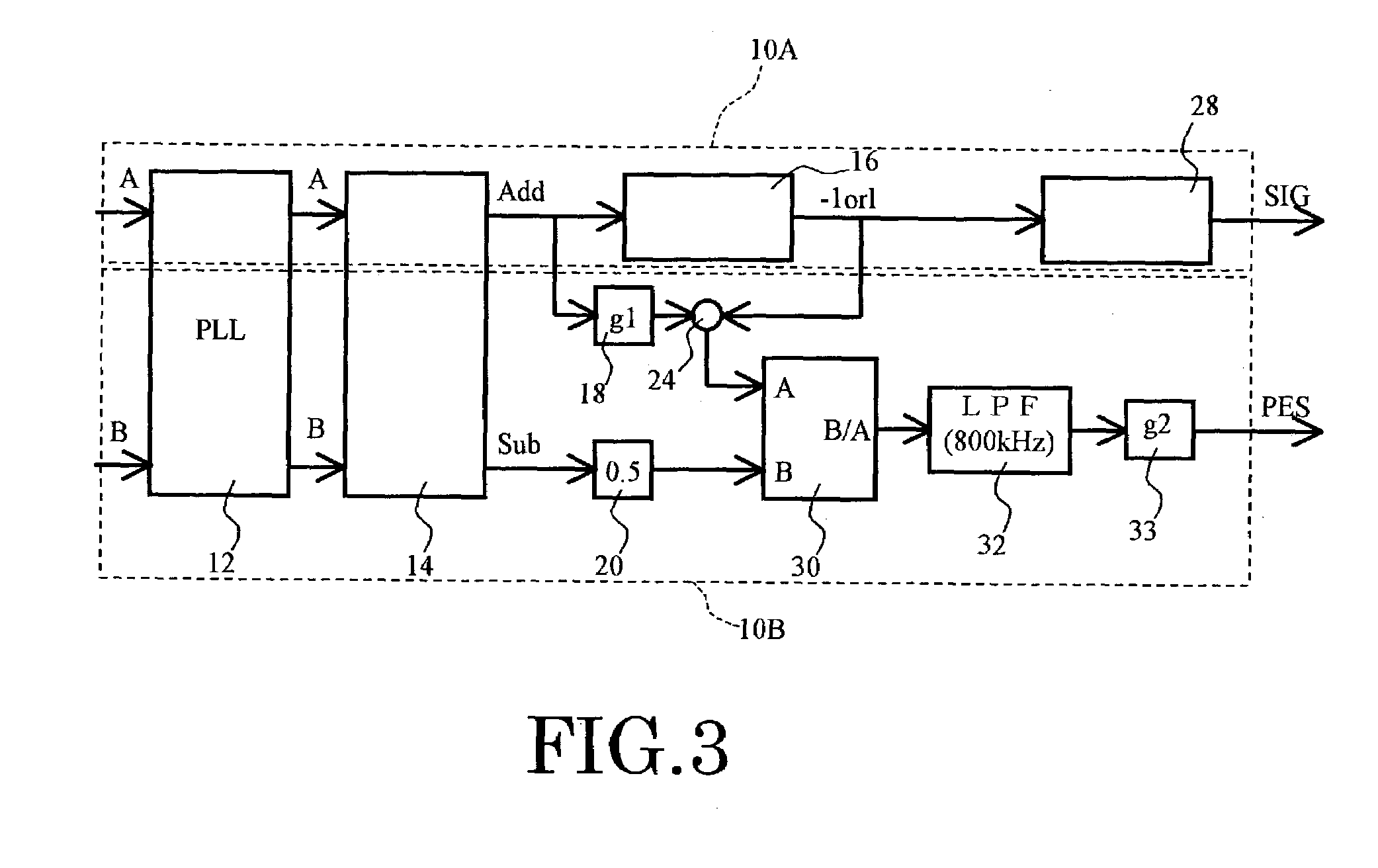Magnetic recording and reproducing apparatus and magnetic recording medium
a recording and reproducing apparatus technology, applied in the direction of maintaining head carrier alignment, track following on tapes, instruments, etc., can solve the problems of narrowed track resolution, inability to achieve the level of accuracy, and inability to empirically measure the servo bandwidth above approximately 18 of the sampling period, etc., to achieve remarkable enhancement in recording density. the effect of magnetic recording and reproducing
- Summary
- Abstract
- Description
- Claims
- Application Information
AI Technical Summary
Benefits of technology
Problems solved by technology
Method used
Image
Examples
first embodiment
[0062](First Embodiment)
[0063]As the first embodiment of the invention, explanation is first made on a magnetic recording and reproducing apparatus and a 1 Tbpsi class HDD system using a magnetic recording medium suitable for the magnetic recording and reproducing apparatus.
[0064]FIG. 1 is a conceptual diagram exemplifying a basic plane configuration of a magnetic head used in a magnetic recording and reproducing apparatus according to the first embodiment of the invention.
[0065]This magnetic head includes a write region WH for the recording head and a magnetic detection region RH for the reproducing head, which are aligned along the lengthwise direction of tracks of a recording medium, not shown. A magnetic shield, not shown is adequately provided between the write region WH and the magnetic detection region RH.
[0066]The magnetic detection region RH for the reproducing head includes two magnetic detection regions RH1, RH2 that are offset in both lengthwise and widthwise directions ...
second embodiment
[0107](Second Embodiment)
[0108]Next explained is the second embodiment of the invention by way of a specific example using the head configuration of the first embodiment and using a different recording medium with reference to FIGS. 7 and 8. The configuration shown here is a specific example using a recording medium in which the guard band TG is uniformly magnetized to the N pole. This facilitates the manufacture of the recording medium and simplifies the signal processing circuit, etc.
[0109]FIG. 7 shows a recording medium accessed by the head. In this specific example, the magnetic recording medium has a structure alternately arranging writing-available recording tracks TR and writing-prohibited guard bands TG. The recording tracks TR are made of a material available for recording by the record magnetic field applied from the write region WH. The guard bands TG are made of a material that disables writing by the signal magnetic field from the write region WH. However, the guard ban...
third embodiment
[0117](Third Embodiment)
[0118]Next explained is a 400 Gbpsi-class HDD system combining a vertically magnetized patterned medium according to an embodiment of the invention with double reproducing heads disclosed in Japanese Patent Laid-Open Publication No. hei 06-215322, for example, with reference to FIGS. 10 through 13. The specific example shown here is a system in which the track pitch of the recording medium is 115 nm, and the minimum bit length is 14 nm. Its head accessing mechanism may be of a type using an arm configuration with the same length as the conventional one and varying in skew angle between inner circumferential portions and outer circumferential portions of the medium disk.
[0119]FIG. 10 is a conceptual diagram illustrating the head located on the magnetic recording medium in the third embodiment of the invention. The magnetic recording medium has a structure alternately arranging 55 nm wide guard bands TG and 60 nm wide recording tracks TR, and the guard bands TG...
PUM
| Property | Measurement | Unit |
|---|---|---|
| bit length | aaaaa | aaaaa |
| bit length | aaaaa | aaaaa |
| width | aaaaa | aaaaa |
Abstract
Description
Claims
Application Information
 Login to View More
Login to View More - R&D
- Intellectual Property
- Life Sciences
- Materials
- Tech Scout
- Unparalleled Data Quality
- Higher Quality Content
- 60% Fewer Hallucinations
Browse by: Latest US Patents, China's latest patents, Technical Efficacy Thesaurus, Application Domain, Technology Topic, Popular Technical Reports.
© 2025 PatSnap. All rights reserved.Legal|Privacy policy|Modern Slavery Act Transparency Statement|Sitemap|About US| Contact US: help@patsnap.com



